-
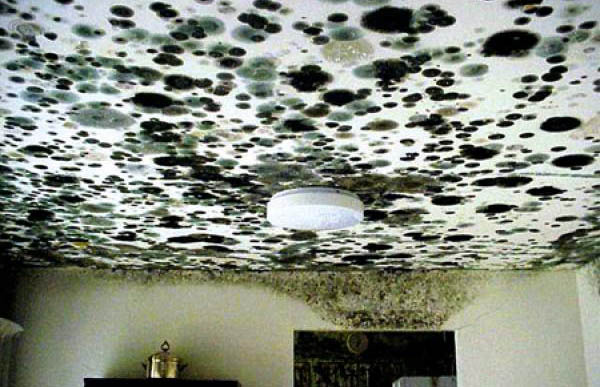
Black Stachybotrys Mold Growth on Sheetrocked Ceiling
-
Mold Remediation Procedures ::
-
1)
Containment: We set-up a proper containment area to prevent the spreading of mold spores from the contaminated work area
to non-target areas.
Then, a heppa filtered air scrubbing machine is installed to remove air-born mold spores during
the mold removal procedures. This is most important when
performing basement mold remediation, or when performing mold
remediation to inside living areas of the house.
-
2)
Removing
the Mold Contaminated Materials: Removing the
Mold Contaminated Materials: We then remove and dispose of all
porous, contaminated materials. I.E. Sheetrock, wall and
ceiling insulation and carpeting.
Note: A
common place we perform mold remediation, other than to an
attic ceiling
or bathroom, is to a basement for grey or
black mold removal. Black mold growth found in a wet basement
is frequently the most toxic type of mold we remediate. Its
called stachybotrys mold. Its usually a solid black color and
needs very high moisture levels (like a past flood) to get
established.
-
It prefers to grow on cellulose
materials that got wet; i.e. sheetrock walls.
Another
common basement mold is called aspergillus. Its found in
damp basements with a humidity level above 60% growing on
walls, ceilings and stored items on, or near the floor.
Aspergillus mold growth can look either white, grey or
charcoal colored. This is usually a medium toxicity type of
mold.
-
3)
Killing
and Cleaning the Mold:
Then, our Mold Remediation Technology is applied by trained, professional technicians.
We'll clean the mold with an EPA registered moldicide/cleaner/sanitizer/ disinfectant
specifically formulated for mold remediation that will kill
all surface molds. We then perform an additional 3 steps that
many mold remediation companies skip.
-
4) Removing the Mold Stains: We'll apply a very
specialized mold stain remover that will
remove the remaining deep mold stains. This is most
important when performing mold remediation to exposed attic
ceiling wood. To read why, see our Attic Mold Page.
-
5) Fungicide: We'll then treat the wall and or,
ceiling materials with an environmentally friendly solution
from the mineral family that
is designed to penetrate deeper into the wood to kill the mold
roots (hyphae) and prevent mold re-growth.
-
6)
Sealer: A long lasting anti-microbial
encapsulant sealant can also be applied. We use different
types of mold remediation sealers for various areas and
materials. After the application of our sealer we can
warranty the treated materials against future mold
re-growth.
-
-
Note:
We use a clear anti-microbial
sealer 99% of the time. Before we can use a clear sealer, we
need to get the cleaned and treated wood surfaces looking
clean & mold free. Some companies routinely apply a white sealer to cover up a
poorly cleaned attic ceiling. When they do this the white
sealer will start peeling within a few years where it was
applied over the remaining moldy areas. This leads to a very
difficult and expensive redo. Also, the white sealer on the
attic ceiling sends out a red flag to any future home
inspectors.
- Note: We also offer
CO2 dry-ice
blast cleaning
for mold removal. This is a preferred method for mold
remediation around chemically sensitive occupants. It is
also often used during the cold winter periods because there
is no need to wait for the initial treatments to dry before
applying any sealers.
-
See - Dry-Ice Blasting Page
Note: Mold remediation is very case
specific. Our treatments are tailored to the unique situation of
each property. Sometimes elderly or sick people can't leave the
premises. Some basements have flooding or moisture problems.
Some attics have ventilation problems or ice dams. All these
conditions will need to be considered before a proper mold
remediation plan can be written.
-
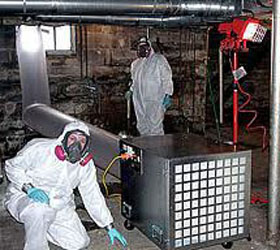
Basement Mold Remediation
-
Mold Abatement Equipment
::
-
We
have the latest in Dry-Ice Blasting Machines, High Capacity
Air Compressors, Air Scrubbing Machines, Negative Air Pressure Machines,
Power Foggers, Powered Air-less Sprayers, High Capacity Dehumidifiers, Air Moving Equipment
-
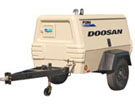
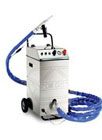

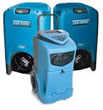
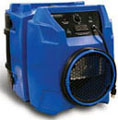
-


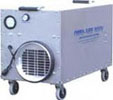
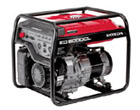

Mold Remediation Certification ::-
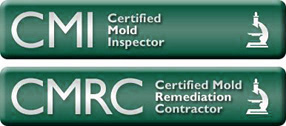
-
Post-Testing ::
- Is it gone?
How do I know? After a mold remediation job has been completed, our company can perform additional mold testing to the treated areas in the environment where the risks were identified and a mold removal procedure was performed. These can be either indoor air testing or direct sample re-testing
of remediated materials. All samples are sent to an
independent 3rd party laboratory for analysis. Data analysis from these new culture surveys is made available to the client on a confidential basis. At that point we can provide a scientific-based before and after evaluation of our work to demonstrate and to provide assurance that the building is safe.
- Prevention ::
- How can I stop mold from returning after I have had a mold remediation treatment
performed? Find the water intrusion source(s) and correct them.
-
-
If
the mold problem was in the basement:
-
- Make sure gutters take roof water at least
8 ft. away
from exterior foundation
- Seal any foundation or basement floor cracks
- Cover dirt crawlspaces with poly
- Run a de-humidifier
set at 50% or lower
- If the mold problem was in the attic:
Check the attic roof for leaks after a heavy rain
Prevent winter ice dams on roof
Make sure
upstairs bathroom is venting outside - not inside attic
Check to see if there is adequate lower soffit vent
openings
Make sure
the soffit vents are not covered with floor insulation
Homes should have proper ridge venting on the attic peak
Note: Attic
venting requirements vary from house to house. What might be
adequate for one home might be completely inadequate for
another. Poor attic ventilation will lead to wet attic ceilings
in the winter and even frost can build-up on them. This wet
attic ceiling condition in the winter is when mold growth
occurs.
Advanced Mold
Testing & Remediation Services
Clinton MA
1-888-449-6653
Clinton MA -
Mold Remediation
Clinton MA - Black Mold Removal
Clinton MA - Mold in Basement Removal
Clinton MA - Mold Inspection & Mold Testing
Clinton MA - Basement Mold
Remediation
Clinton MA - Attic Mold Removal
For all Your
Pest Control Needs
Security Pest Control for Carpenter Ant & Termite Control
Certified
Mold Testing or Mold Removal Services in New Hampshire
Mold Testing & Mold
Remediation Services in New Hampshire
|













